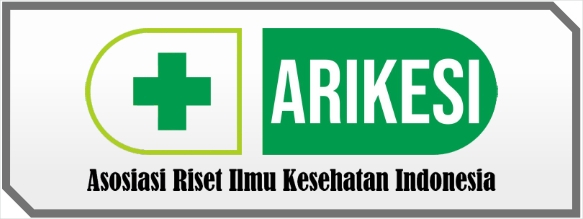SOCIALIZATION OF THE DANGERS AND EFFECTS OF DRUG AND PSYCHOTROPIC USE FOR THE PROGRESS OF THE NATION (STOP DRUGS)
DOI:
https://doi.org/10.36465/jupemas.v5i2.1350Keywords:
DRUGS, Socialization, Adolescent.Abstract
The service team carried out a community service program because the juvenile drug problem was already very worrying. The community really hopes that schools can prevent the harm and spread of drugs. However, there are several problems faced by the partner school, SMPN 1 Kras, including: the teacher council lacks the capacity and understanding of drug problems and dangers; lack of training and media socialization and education about the dangers of drugs; and lack of media development and socialization and education facilities about the dangers of drugs in partner schools. Departing from these problems, the service team provides solutions through community service activities, namely: a) Providing education to adolescents about: Dangers of Drugs and How to Avoid Drugs through training and seminars on the dangers of drugs, b) Improving the ability of adolescents to develop media used for socialization of the dangers of drugs. This service activity will be carried out for three days through training and socialization methods or methods. The results of the activity are known that there is an increase in understanding of various types of drugs, the impact on adolescents, and how to prevent them, Increasing the ability of adolescents, BK teachers, and homeroom teachers in making socialization and education media on the dangers of drugs using or utilizing social media, Building synergy of cooperation between partners and the service team of the BK study program of SMPN 1 KRAS in preventing the dangers of drugs for students at SMPN 1 KRAS in particular and the revitalization of the existence and role of PIK R in SMPN 1 KRAS to educate teenagers about the dangers of drugs.
Keywords: NAPZA; Socialization; Adolescent.
References
Allen, Stewart (2003). The Devil’s Cup. Random House. ISBN 978-0-345 44149-2.
Beg, M. (2017). Implementing the UNGASS 2016 Outcome Documents. Stimulant drugs and HIV: Addressing the needs. Presented at Post UNGASS 2016 CND thematic Discussion on UNGASS implementation, 26 September 2017.
BNN-PPK UI (2017). Executive summary: Survei penyalahgunaan dan peredaran gelap markoba tahun 2018. Jakarta : Puslitdatin BNN.
BNN- LIPI, 2018. Survei penyalahgunaan dan peredaran gelap narkoba tahun 2018. Jakarta: Puslitdatin BNN.
BNNP dan Polda Kalsel. 2013. Data Rekapitulasi Data Narkoba.
Borrell-Carrió F, Suchman AL, Epstein RM: The biopsychosocial model 25 years later: principles, practice, and scientific inquiry. Ann Fam Med 2004;2:576-582.
Direktorat Jendral Pemasyarakatan (Ditjenpas). 2013. Data Statistik Kriminal Anak yang Berkonflikdengan Hukum Provinsi Lampung Tahun 2013. Jakarta.
Dahlan, 2017, Problematika Keadilan Dalam Penerapan Pidana Terhadap Penyalah Guna Narkotika,Deepublish, Sleman.
Engel GL: The need for a new medical model: a challenge for biomedicine. Science 1977;196:129-136. Engel GL: The clinical application of the biopsychosocial model. Am J Psychiatry 1980;137:535-544.
Frankel RM, Quill TE, McDaniel SH (Eds.): The Biopsychosocial Approach: Past, Present, Future.University of Rochester Press, Rochester, NY, 2003.
Grifell, Hart. (tahun). Is Drug Addiction a Brain Disease? Source: https://www.americanscientist.org/article/is-drug-addiction-a-brain-disease
Griffiths M. A ‘components’ model of addiction within a biopsychosocial framework. Journal of Substance Use, August 2005; 10(4): 191–197
Hopkins, Kate (March 24, 2006). “Food Stories: The Sultan’s Coffee Prohibition”. Archived from the originalon November 20, 2012. Retrieved September 12, 2006.
Howarth, A.T., Misra, ABPPK., Epner, A., Cooper, G.M. The many causes of addiction and biopsycho-cocial-spiritual model. MentalHelp.net., https://www.mentalhelp.net/articles/the-manycauses-of-addiction and-bio-psych-social-spiritual-model/
Kaddi SM. Strategi Penyuluhan Kesehatan Masyarakat Dalam Menanggulangi Bahaya Narkoba diKabupaten Bone. Jurnal Academica Fisip Untad.
NIDA, 2017. Drugs, Brains and Behavior. The Science of Addiction. NIDA.
Sahu (2012). Substance Abuse, Causes and Consequences, Bagbasi Academic. Journal Vol 9. ISSN 2249-0655
Stevens, O/. & Forrest, J.I. (2018). Thinking upstream: the roles of international health and drug policies in public health responses to chemsex. Sexual Health 15(2) 108-115 https://doi.org/10.1071/SH17153
Taboada,P, Fedoryka Cuddeback, K., and Donohue-White, P. (eds.), Person, Society and Value: Towards a Personalist Concept of Health, 209-227. Diunduh dari: https://bookspics.com/ebooks/person-society-and value-towards-a-personalist-concept-ofhealth/
The Globalisation of Addiction: A Study in Poverty of the Spirit. BK Alexander. Oxford University Press, 2010.
UKPDC (2012). Briefing paper: Illicit Drugs and Public Health in 2012.
UNODC, World Drug Report 2018.
Vanderplasschen, W., De Maeyer, J., Colpaert, K., Cogels, S., Rea, A., Donn, G., Sabbe, B., Broekaert (Eds). Poly substance use and mental health among individuals presenting for substance abuse
treatment. Diunduh dari: http://www.belspo.be/belspo/organisation/publ/pub_ostc/Drug/rDR55_en.pdf
Zaidan, Ali, M, 2016, Kebijakan Kriminal, Sinar Grafika, Jakarta










